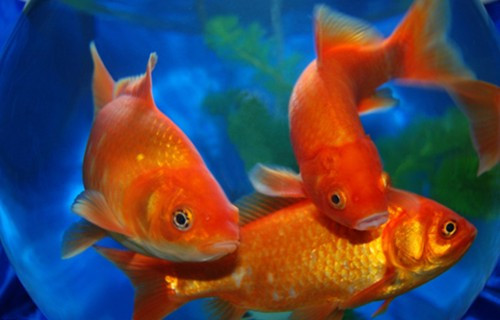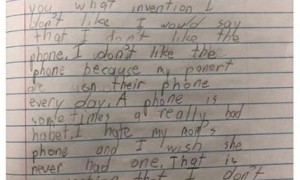导读:近日,澳大利亚政府宣布了一项耗资1500万澳元的计划——向河流中释放一种疱疹病毒,以清除该国最臭名昭著的鱼类病害。

Australia plans to release the herpes virus into its main river system to kill millions of carp despite concerns that the so-called “carpageddon” could fill the waterways with rotting fish.
澳大利亚政府计划向主河道中释放一种疱疹病毒,以清除该成千上万的鲤鱼。尽管有担忧称这所谓的“鲤鱼灭绝”会造成腐烂的鲤鱼尸体堵塞河道。
The plan follows calls by farmers, environmentalists and scientists who have urged authorities to address a “plague” of European carp which has infested the 2,300-mile Murray-Darling river system in eastern Australia.
这项计划是响应了农民、环保主义者和科学家的呼吁,因欧洲鲤鱼肆虐了澳大利亚东部长达2300英里的墨累-达令河,他们一直敦促政府处理这个“瘟疫”。
The carp, which are large and notoriously ugly, consume native fish but also churn up mud and make it hard for other marine life to feed or breathe.
这种鲤鱼,体型较大,且奇丑无比,它不仅吞食当地的鱼类,还喜搅动泥浆,使得其它海洋生物难以进食或呼吸。
Chris Pyne, the federal science minister, said the introduction of the virus would begin in 2018 and will wipe out about 95 per cent of the carp.
澳大利亚科学部长Chris Pyne说,鲤鱼疱疹病毒将于2018年底释放,将能清理95%的鲤鱼。
Authorities plan to use a specially-developed strain of the virus which does not kill other marine life.
政府计划使用一种特别研发的病毒,不会伤害到本土鱼类物种。
But Mr Pyne admitted that the government has yet to decide precisely what to do with all the dead fish.
不过Chris Pyne表示,如何处理这么多死鱼,政府还有待制定精确方案。
"Suddenly, there will be literally hundreds of thousands, if not millions of tons of carp that will be dead in the River Murray," he said.
他说,“墨累河里突然间会有成千上万的、甚至数百万吨的鲤鱼死亡。”
"We have to have a clean-up program… We need to have legislative changes potentially. There’s obvious talk about whether the carp could be used for fertiliser, whether they could be used for pet food, whether they’ll need to be buried in large graves and be allowed to dissipate back into the system.”
“我们必须制定出一个清理计划……我们可能需要做立法的变更。有一些讨论认为,是否可以将鲤鱼用作肥料,或者用作宠物食品,或者埋葬在大规模的墓地里,甚至是,任其在河里直到消失。”
The river system is believed to have up to two million tons of carp, which cause about 260 million pound worth of damage each year.
据估计河流里可能有200万吨的鲤鱼,每年造成2.6亿英镑的损失。
Despite concerns about the clean-up, the mass kill was largely welcomed.
尽管对清理工作有担忧,但这种大规模的杀戮还是受到了很大程度的欢迎。
“They are an unattractive oily fish with heavy scales and whiskers, and, left unchecked, they grow to a very large size,” said an editorial in South Australia’s Sunday Mail newspaper.
南澳大利亚星期日邮报的一个编辑说,“它们是一种很难看的多油的鱼,长着厚厚的鳞片和浓密的胡须,并且,据说它们能长到非常大。”
“They are hardy and omnivorous and consume everything in their wake… There seems to be nothing good about them.”
“它们很强壮,是杂食动物,所有东西都能成为它们的食物。看起来他们没有什么好处。”
However, some fishermen and local tourism businesses expressed concern about the potential mess.
不过,一些渔民和当地旅游机构表达了对这种大量清理的担忧。
"I think a river full of dead carp is not going to be fantastic for business," Robert Hughes, houseboat operator, told ABC News.
游艇经营者Robert Hughes告诉ABC,“对于生意人来说,满是鲤鱼尸体的河面,可不是件好事。”
The carp were first brought to Australia about a century ago and were apparently admired as more exotic than other native fish, but their numbers quickly grew after they escaped from dams into rivers in the 1960s.
这种鱼最早是在一个世纪前被引入澳洲,当时被赞比本地鱼类看起来更具异国情调,之后,它们从水库里逃往河流,便开始迅速繁殖蔓延。







